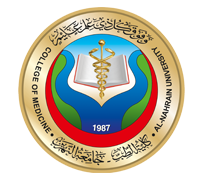|
Vol. 8 Issue 1 January - March / 2010
Published on website | Date : 2016-06-18 15:27:15
ISOLATION AND IDENTIFICATION OF RESPIRATORY SYNCYTIAL VIRUS FROM INFANTS WITH HISTOPATHOLOGICAL STUDIES OF THE ISOLATED VIRUS ON EXPERIMENTAL ANIMALSShony M. Odisho, Anton S. Al-Bana ,Nahi Y. YaassenAbstractBackground: Human Respiratory syncytial virus (HRSV) is one of the major causes of severe bronchiolitis and pneumonia in infants.
Objective: Isolation of virus from specimens from infants with severe bronchiolitis and pneumonia, and study the histopathological changes in laboratory animals. Methods: Specimens collated from infants with lower respiratory tract infection were tested with Respi-Strip kit for the presence RSV antigens; the positive samples were inoculated in HEP-2 for 6-7 passages, and using neutralization test and fluorescent antibody techniques for detection of the isolated virus. Also 20 mice's 10 weeks old divided into 2 groups one inoculated by dropped in nasal 0.5 ml of 100 TCID50/ml and the other 0.5 ml media as control. The lungs removed for histopathology study and the isolation of the virus in 2-7 days after inoculation. Results: The Human RSV was successfully isolated in HEP-2 cell line from five specimens collected from infants with respiratory tract infection, previously tested for presence of RSV antigen by using Respi-Strip kits, where viral cytopathic effect (CPE) was first detected on 3rd passage with characteristic giant cell or syncytia type formation after 3 days post inoculation. Viral isolates were identified by using homologous reference antiserum by applying indirect immunofluorescent technique (IFAT) and neutralization test (NT). Experimental infection of mice with the isolated virus revealed histological changes in infected lung mainly characterized with evidence of acute interstitial pneumonia; in addition viruses were re-isolated from infected lung specimens after 2-7 days of experimental infection. Conclusion: Human RSV replicated well in HEP-2 and cytopathic effect appeared in passage three, also the virus can be isolated and cause pathologic change in lung of infected mice. Key words: RSV, HEP-2, Neutralization test. Full-text |
Some tools below are only available to our subscribers or users with an online account |
 |
Please wait until the current process completes ... |



